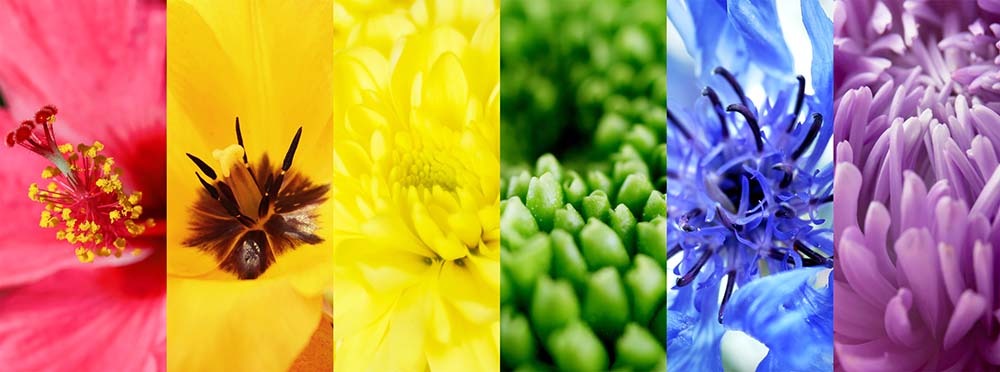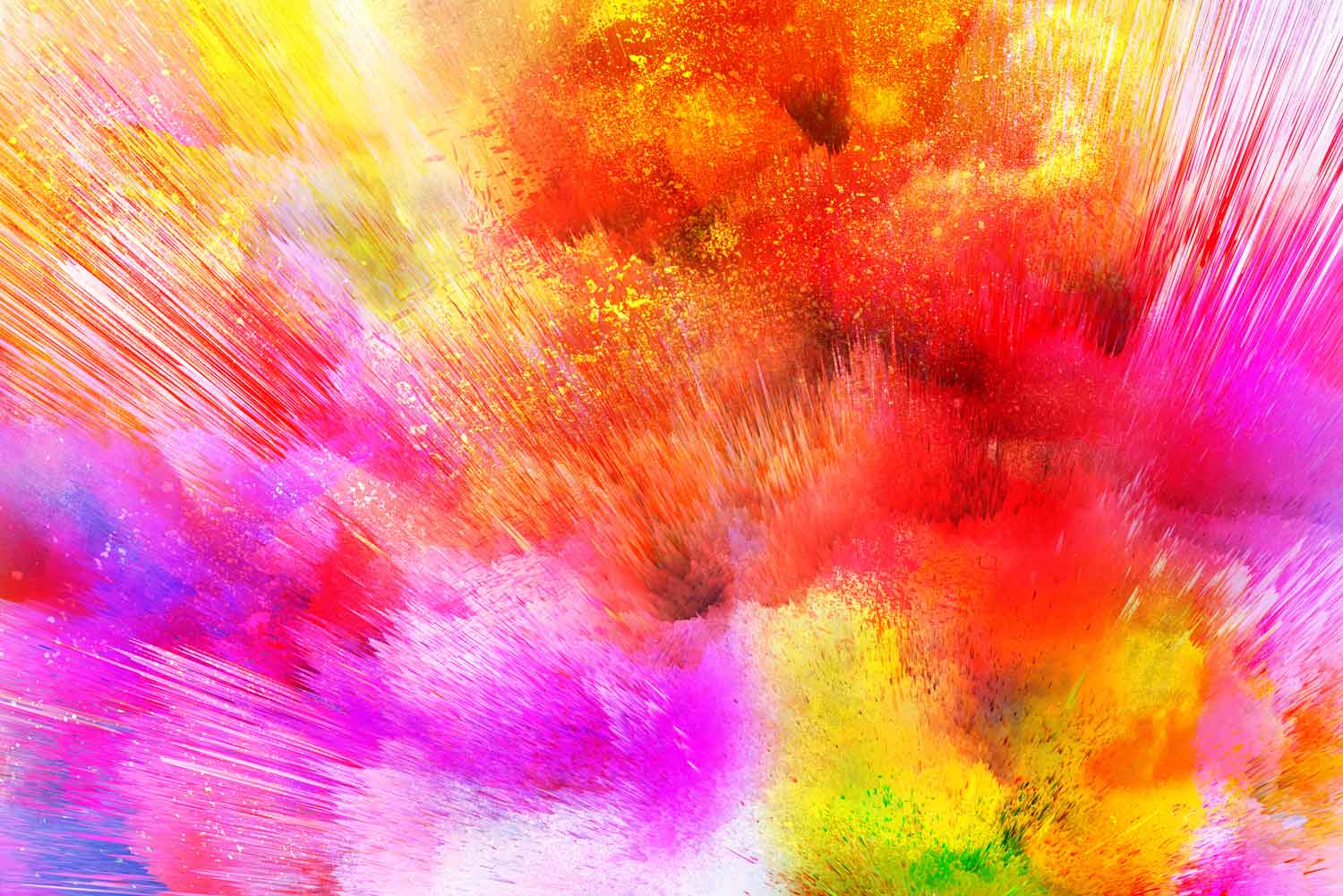Have you ever visited a website and felt an instant emotional connection to it? Conversely, have you ever been repelled by a website’s color scheme? Colors wield a significant emotional impact and leave a lasting impression, making the selection of the right color palette crucial for creating a relatable and appealing brand.
Choosing effective colors for your website helps define the brand’s identity and communicates its values clearly to visitors. This strategic use of colors enhances user engagement by guiding them intuitively through the site’s content. It highlights key actions such as ‘Buy Now’ or ‘Subscribe’ buttons with contrasting tones, drawing immediate attention and aiding navigation.
Furthermore, colors can significantly influence mood and feelings. For example, blue often evokes feelings of trust and stability, while orange can generate enthusiasm and excitement. Leveraging these emotional impacts through color choice cannot just alter user behavior, but potentially increase conversion rates and foster customer loyalty, thereby directly impacting your business outcomes.
Overall, thoughtful color selection solidifies brand identity and enhances the site’s usability and effectiveness, ultimately enriching the user experience.
Understanding the Basics of Color Psychology
Color psychology is a fascinating area of color theory that has captivated experts from various fields, including marketing, advertising, and design. The underlying principle behind color psychology is that colors can impact our emotions and influence our behavior. As such, color psychology delves into the intricate connection between colors and human emotions, behavior, and mood.

According to the London Image Institute, our experiences and childhood memories can shape our associations between colors and feelings. For instance, red is often linked with passion, excitement, and love, while blue is commonly associated with calmness, trust, and loyalty. However, it’s worth noting that the psychology of color extends beyond personal experiences and cultural backgrounds. Studies have shown that specific colors elicit consistent emotional responses across individuals and cultures. Understanding color psychology can be a valuable tool in various fields.
For example, marketers use color psychology to create targeted advertising campaigns that evoke specific emotions and encourage certain behaviors. In addition, designers use color psychology to develop color schemes that reinforce brand identity and create a cohesive visual experience for users.
Beyond Marketing & Design: Color Psychology in Diverse Fields
Furthermore, color psychology extends its influence into product development and interior design. In product design, colors are selected to appeal to specific demographics or convey certain qualities, such as sustainability or luxury. Interior designers use color schemes to enhance the functionality of spaces, with cool tones promoting relaxation in bedrooms and vibrant colors energizing home offices. Even in healthcare, color choices in hospital environments are made to help calm patients and aid in recovery, showcasing the impact of color on well-being.

Overall, color psychology is a profound area of study that explores the power of colors to affect our emotions, behavior, and mood. By understanding the emotional connotations of different colors, professionals across various industries can harness their ability to create impactful designs, marketing campaigns, and branding strategies, optimizing both aesthetic appeal and functional impact

The Psychological Effects of Colors
Colors have different psychological effects on people, and these effects can be harnessed to achieve specific goals. The following are some of the psychological impacts of colors:
Red:
Red is a powerful color that evokes strong emotions. It is often associated with passion, excitement, and love. In addition, red is commonly used to create a sense of urgency, which is why it is often used in sales promotions and clearance sales.
Blue:
Blue is a calming color associated with trust, loyalty, and intelligence. It is a popular color for corporate branding, as it conveys a sense of professionalism and reliability.
Green:
Green is a color associated with nature, growth, and renewal. It is often used to promote eco-friendly products and services, and it is also used to create a sense of relaxation and tranquility.
Yellow: Yellow is a cheerful and optimistic color often used to create a sense of happiness and warmth. It is a popular color for fast-food chains and other businesses that want to create a sense of urgency and excitement.
Orange:
Orange is a vibrant and energetic color often associated with creativity, adventure, and excitement. It is commonly used in branding products that are targeted toward young people.
Black:
Black is a powerful and sophisticated color that is often used to create a sense of luxury and exclusivity. It is also used to create a sense of mystery and drama.
White:
White is a pure and innocent color often used to create a sense of cleanliness and simplicity. It is a popular color for healthcare facilities, conveying a sense of sterility and safety.
How to Use Color Psychology in Your Website Design
Using color psychology in your design can help create a more effective and engaging website, advertisement, or product. The following are some tips for using color psychology in your design:
1. Understand your target audience:
The most influential colors will vary depending on your target audience. For example, bright, bold colors may be more effective for children's products, while muted, pastel colors may be more appropriate for products targeted toward adults..
2. Choose colors that align with your brand identity:
Your color choices should align with your brand identity and the message you want to convey. For example, using black and gold may be appropriate if you create a sense of luxury and sophistication.ts..
3. Use contrast:
Using contrasting colors can help certain design elements stand out. For example, using a bright color for a call-to-action button can make it more noticeable and increase users' likelihood of clicking.
4. Consider Cultural Significance:
Remember that your target audience's cultural background can influence their perceptions of colors. Colors may have different meanings and associations in different cultures, so it's essential to research and understand these cultural nuances to ensure your color choices resonate positively with your audience across diverse demographics.
5. Beyond simply choosing colors
Beyond simply choosing colors that align with your brand identity, aim to evoke specific emotions and create meaningful connections with your audience through color. For example, warm tones like red and orange can evoke feelings of excitement and passion, while cool tones like blue and green can evoke a sense of calmness and trust. Selecting colors that evoke the desired emotional response can help strengthen the bond between your brand and your audience.
6. Use Color Consistency:
Maintain consistency in your color palette across all touchpoints of your brand, including your website, advertising materials, packaging, and products. Consistent use of colors helps reinforce brand recognition and identity, making it easier for consumers to associate specific colors with your brand and its values.
7. Test & Iterate:
Don't hesitate to experiment with different color combinations and monitor their impact on user engagement and behavior. Conduct A/B testing or gather feedback from focus groups to evaluate the effectiveness of different color schemes and make data-driven decisions to optimize your design for maximum impact.
8. Accessibility Considerations:
Ensure that your color choices are accessible to all users, including those with color vision deficiencies. Use tools and guidelines provided by accessibility standards, such as the Web Content Accessibility Guidelines (WCAG), to ensure that your color combinations maintain sufficient contrast and readability for all users.
By implementing these additional strategies in conjunction with the provided tips, you can harness the full potential of color psychology to create visually compelling designs that resonate deeply with your audience and drive meaningful engagement with your brand.
Use Colors Sparingly
While colors can be powerful, using too many colors can be overwhelming and can detract from the message or content you’re trying to convey. When using colors, it’s essential to be intentional and purposeful. Choose a limited color palette that complements your brand or message, and use those colors consistently throughout your design or project.
Strive for Simplicity
Additionally, consider the psychological impact of each color in your palette and how they interact with one another. Certain color combinations can evoke specific emotions or associations, so it’s crucial to choose colors that reinforce the desired mood or message of your design.
Moreover, remember that color doesn’t have to be the sole means of visual interest in your design. By skillfully incorporating other design elements, such as typography, imagery, and layout, you can create a balanced and visually appealing composition without relying solely on color, instilling confidence in your design choices.

Additionally, consider the psychological impact of each color in your palette and how they interact with one another. Certain color combinations can evoke specific emotions or associations, so it’s crucial to choose colors that reinforce the desired mood or message of your design.
Moreover, remember that color doesn’t have to be the sole means of visual interest in your design. By skillfully incorporating other design elements, such as typography, imagery, and layout, you can create a balanced and visually appealing composition without relying solely on color, instilling confidence in your design choices.
Branding Your Website
Branding your website with the right colors can indeed significantly impact your online presence and business success. It’s not just about personal preferences; it’s about understanding your target audience and how they perceive your brand. Your website serves as a digital storefront, and the colors you choose play a crucial role in shaping visitors’ perceptions and emotions.
A visually appealing website with a cohesive color scheme can establish a strong brand identity that resonates with your customers. Consistency in color usage across your website helps reinforce your brand’s messaging and values, creating a memorable and unified brand experience.

Moreover, since your website is often the first point of contact between your business and potential customers, making a positive impression is essential. Colors have the power to evoke specific emotions and associations, influencing visitors’ perceptions of your brand’s personality and credibility.
By strategically branding your website with the right colors, you can differentiate yourself from competitors, attract more visitors, and ultimately drive sales. Here’s how:
1. Increasing Brand Recognition
Your brand identity serves as the visual embodiment of your business, encompassing elements such as your logo, fonts, imagery, and colors. Consistency plays a pivotal role in effectively branding your website. Your color choices should harmonize with your brand identity, mirroring the essence and character of your business. This coherence fosters a unified perception, rendering your brand more memorable to consumers. Consequently, it cultivates customer loyalty, encourages repeat transactions, and stimulates positive word-of-mouth referrals, thereby bolstering revenue streams.
2. Creating Emotional Connections
Color serves as a pivotal factor in forging emotional bonds with your clientele. Each hue evokes distinct feelings, enabling you to craft a mood or ambiance that resonates with your brand’s identity. For instance, as a wellness brand, opting for verdant tones can instill a sense of tranquility and rejuvenation. Conversely, as a tech enterprise, incorporating blue hues can evoke sentiments of trustworthiness and dependability. By strategically selecting colors that align with your brand’s essence, you can establish a cohesive and compelling visual narrative that resonates with your audience.
3. Attracting Attention
Employing appropriate colors can elevate your website’s visibility and captivate viewers’ attention. Through the strategic application of contrasting colors, you can establish focal points that guide the gaze toward critical sections of your website, including call-to-action buttons and vital content. This approach fosters heightened user engagement, consequently driving an uptick in conversions.
4. Creating a Positive User Experience = Revenue
Crafting a favorable user experience is a paramount element in revenue generation. The selection of colors for your website wields substantial influence over users’ brand perception and site navigation. By employing suitable colors, specific facets of your website can be accentuated, simplifying the process for customers to locate desired items and, ultimately, facilitating purchases.
5. Influencing Purchase Decisions
Research indicates that as much as 90% of initial product assessments are influenced solely by color. Nonetheless, your selected colors can evoke distinct emotions and establish a mood that resonates with your brand persona. For instance, a dining establishment may opt for warm, welcoming hues to cultivate a snug ambiance, engendering a sense of hospitality and ease among patrons. Likewise, an e-commerce platform might employ vibrant, dynamic colors to evoke enthusiasm and prompt action, urging customers to purchase promptly.
6. Creating a Competitive Advantage
Employing suitable colors can also set you apart from competitors. By crafting a distinctive color palette that mirrors your brand identity, you can distinguish yourself from other players in your sector and draw in more clientele. This can result in heightened website traffic and augmented revenue streams.

Conclusion
The impact of colors on your revenue should not be underestimated. By creating a positive user experience, increasing brand recognition, influencing purchase decisions, and creating a competitive advantage, the colors you choose for your website can significantly impact your bottom line. In addition, by understanding color psychology and using it to your advantage, you can create a website that looks great and drives sales and revenue for your business.
Have questions, please contact us here at Gem Website Design.
If you want to read more about the world of colors and their importance to your brand, here are the references for this article.



